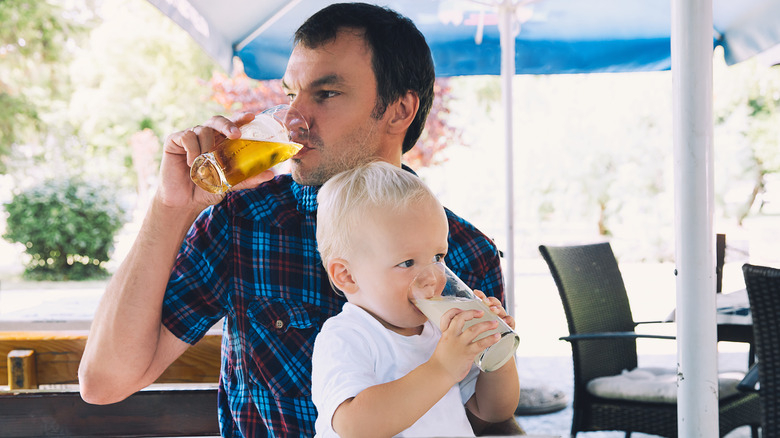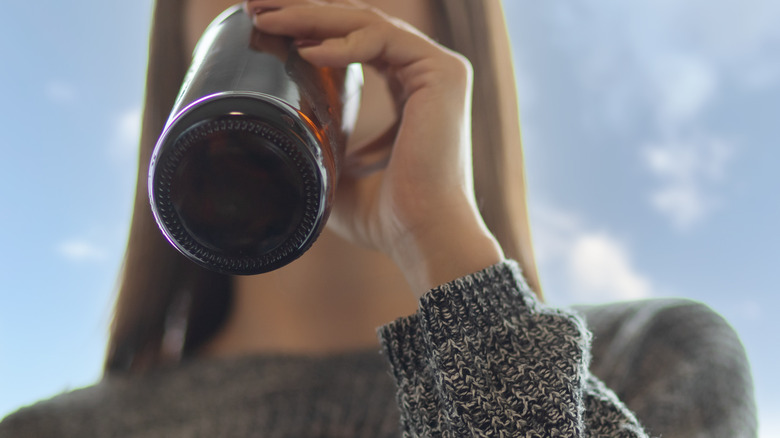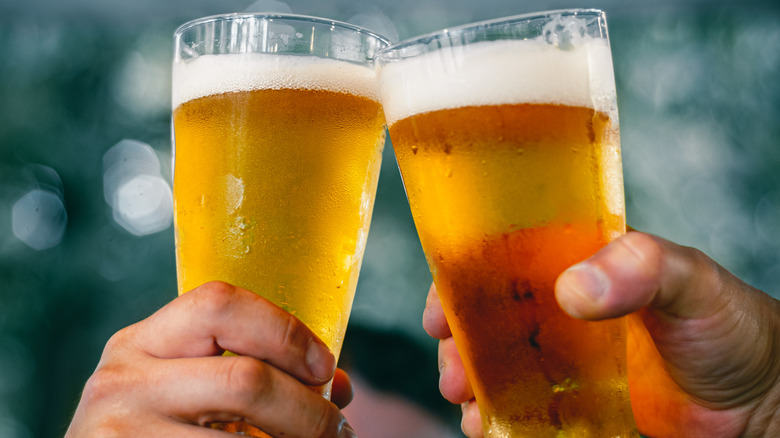The Real Reason The Drinking Age Is 21 In The US
The United States of America is nearly unique among other countries of the world in that its legal drinking age is 21. By comparison, as Vine Pair notes, just about all of Western Europe, most of South America, and most of sub-Saharan Africa, among other places, have a legal drinking age of 18 or even lower (although it bears noting that some other countries have higher drinking ages). The variations have to do with such things as the nations' local drinking cultures, the ages at which various cultures (and their governments) believe people are legally adults who are capable of making their own decisions, and a host of other factors.
In the U.S., the legal drinking age has been all over the place over the centuries, from nonexistent to 18 to 21, and just about everything in between. Though officially there is no federal law mandating a legal drinking age of 21 in all 50 states, the de facto legal drinking age of 21 exists because the federal government holds the purse strings, and a 1984 law ties federal highway funds to setting the minimum legal drinking age (MLDA) at 21, according to Procon.
American children used to drink, like, a lot
There was a time in American history when, save for a few teetotalers, just about everybody drank, including male children. As U.S. History Scene notes, the early colonists pretty much had to drink beer in order to stay alive. Beer contains calories, which are absolutely critical, particularly when food is scarce. Further still, the alcohol within kills microorganisms that could be contained in water and could sicken the drinker, although it would be centuries before anyone connected the microbiological dots.
By 1830, according to PBS, Americans were guzzling alcohol, to the point that even 15-year-old boys were knocking back seven gallons per year — about three times what the average American adult drinks today.
Prohibition put an end to all of that. It didn't really stop anyone from drinking, per se, but it did shine a light on matters of alcohol abuse and related issues. When Prohibition was repealed, the states, keen to keep kids and teens away from alcohol, began setting their own MLDAs. The result was a mishmash of conflicting state laws that existed until 1984.
Congress sets the MLDA at 21, kind of
There were, according to Binwise, MLDA laws before Prohibition. Wisconsin passed a law in 1839 that made it illegal to sell wine or liquor to anyone under 18. After Prohibition, the laws could change dramatically when you crossed state lines, but things started getting pretty consistent around the late 1960s and early 1970s. That's when the 26th Amendment was passed, which lowered the voting age to 18, and the states figured that if people were old enough to vote at 18, they were old enough to drink at 18.
According to an article in Alcohol Health and Research World (posted at the National Library of Medicine), those years when states began lowering their drinking ages to 18, the U.S. saw a dramatic increase in traffic accidents among teenagers. This, and other factors, led to the National Minimum Age Drinking Act of 1984, which set the MLDA at 21 in all 50 states. The act doesn't specifically set the minimum drinking age at 21 — there would be thorny Constitutional issues related to state sovereignty and interstate commerce if it did. Rather, it withholds federal highway funds from those states that don't comply. All 50 states, therefore, have set their MLDA to 21, although there are exceptions, spelled out in detail in different states, about how and under what circumstances minors can drink.
Should the legal drinking age be 21 or 18?
Four decades after the passage of the National Minimum Age Drinking Act, some states are wrestling with whether or not keeping their drinking age at 21 is working. According to Sobering Up, New Jersey, New Hampshire, and California have all taken a second look at their drinking laws in recent years.
The debate is both philosophical and practical. In a philosophical sense, if someone is considered an adult at age 18 — they can vote, fight in a war, take out a credit card, marry, and so forth — then why shouldn't they be able to imbibe? However, in a practical sense, the statistics don't lie, and according to both the Centers for Disease Control and Prevention and Mothers Against Drunk Driving, the data points to lives being saved by keeping the legal drinking age at 21. Those keen to see the age lowered to 18 posit that the higher age just leads to binge-drinking and fake IDs, according to Procon. Further, it costs states revenue from taxes on alcohol sales as well as putting young people into legal trouble simply for trying to have a good time, according to a 2015 analysis by the California Legislature's Legislative Analyst's Office.



